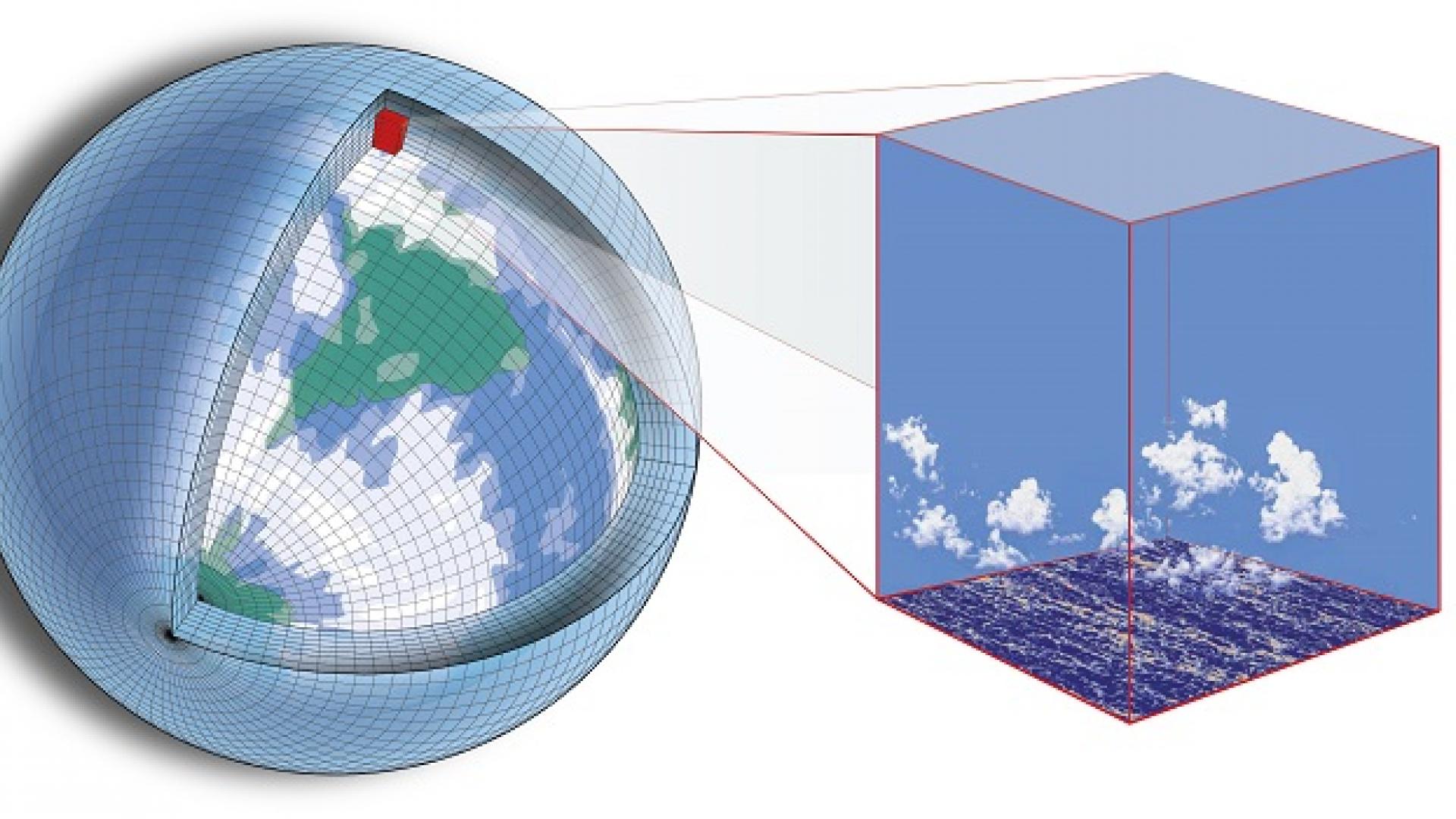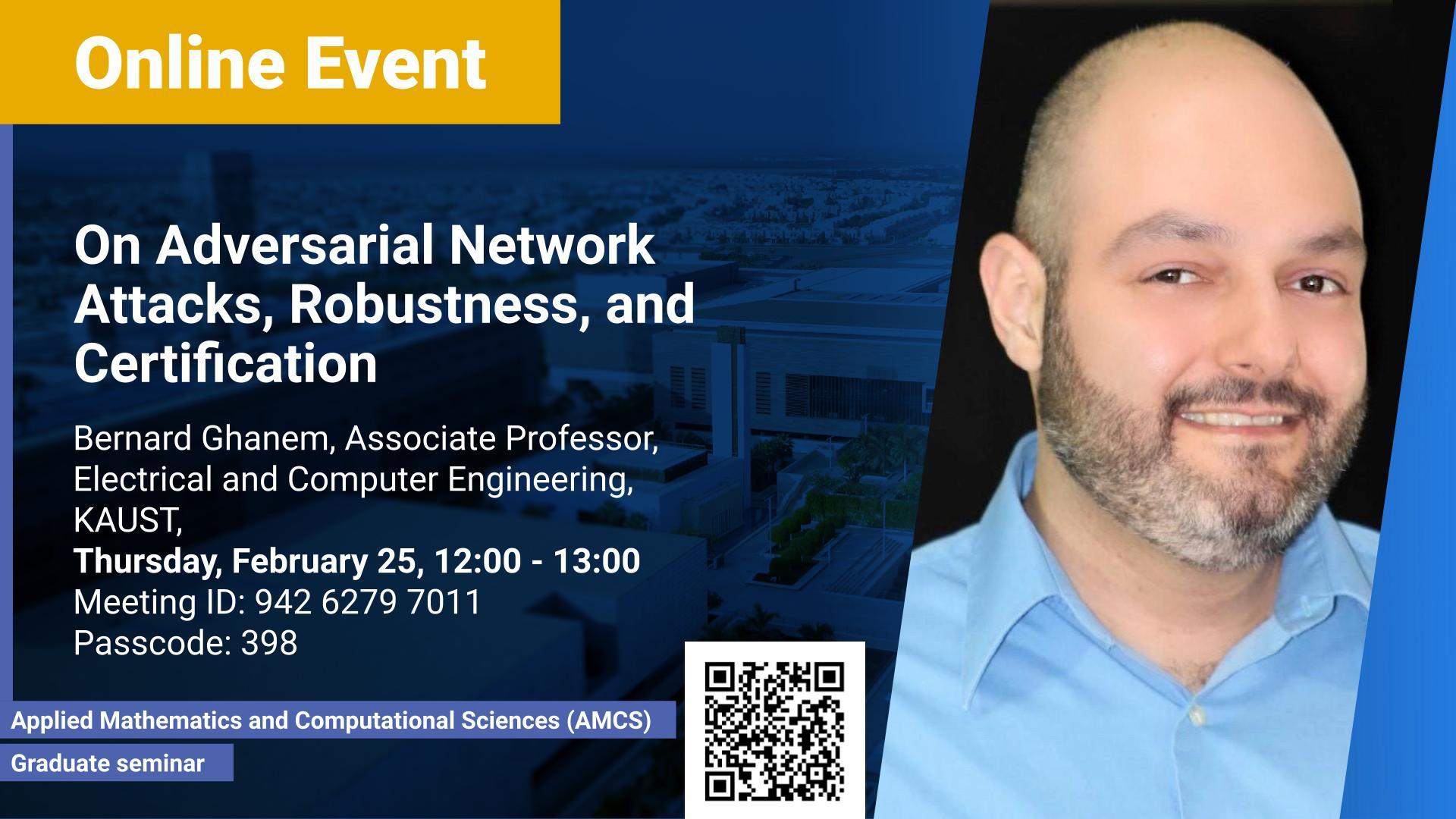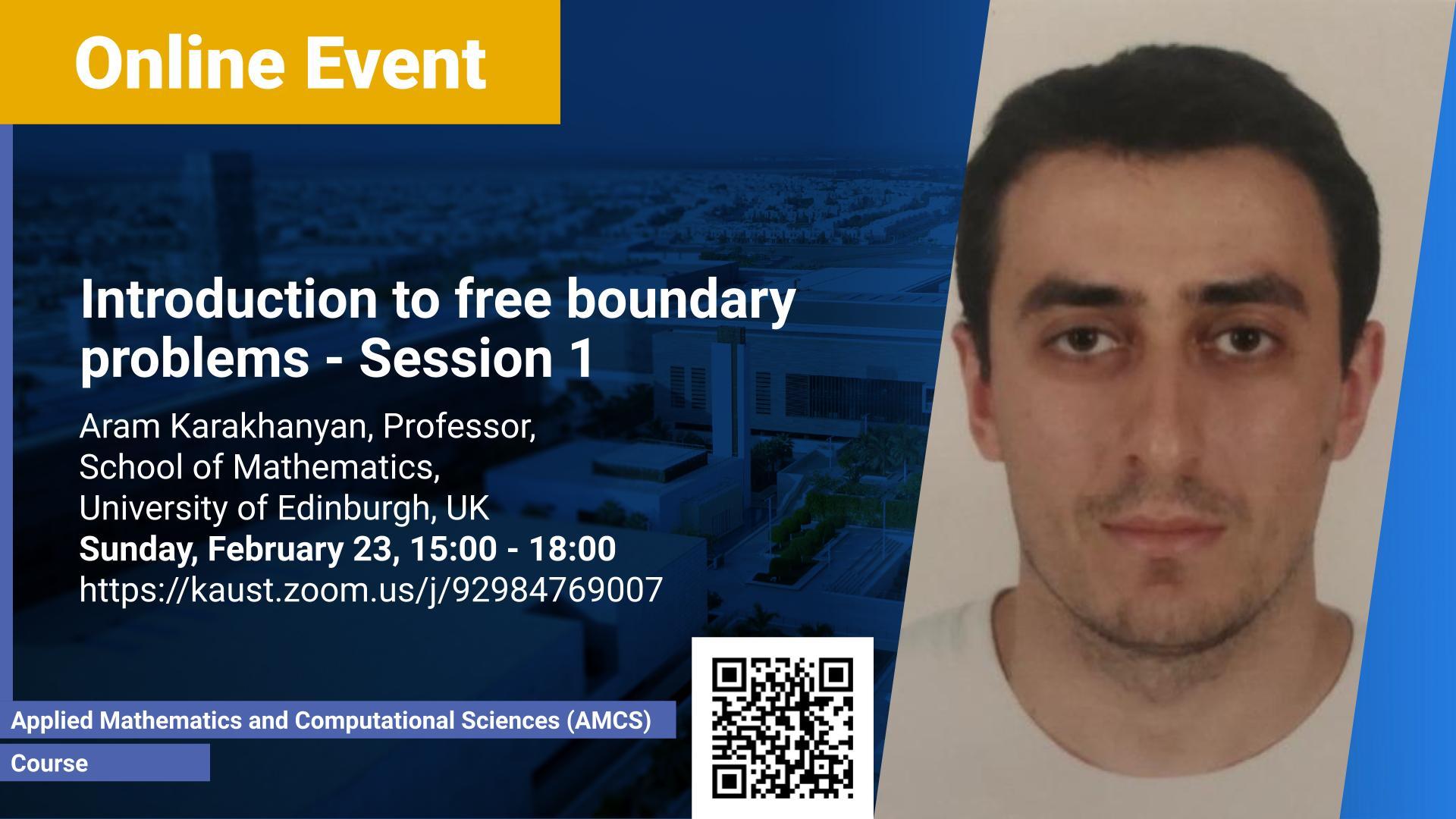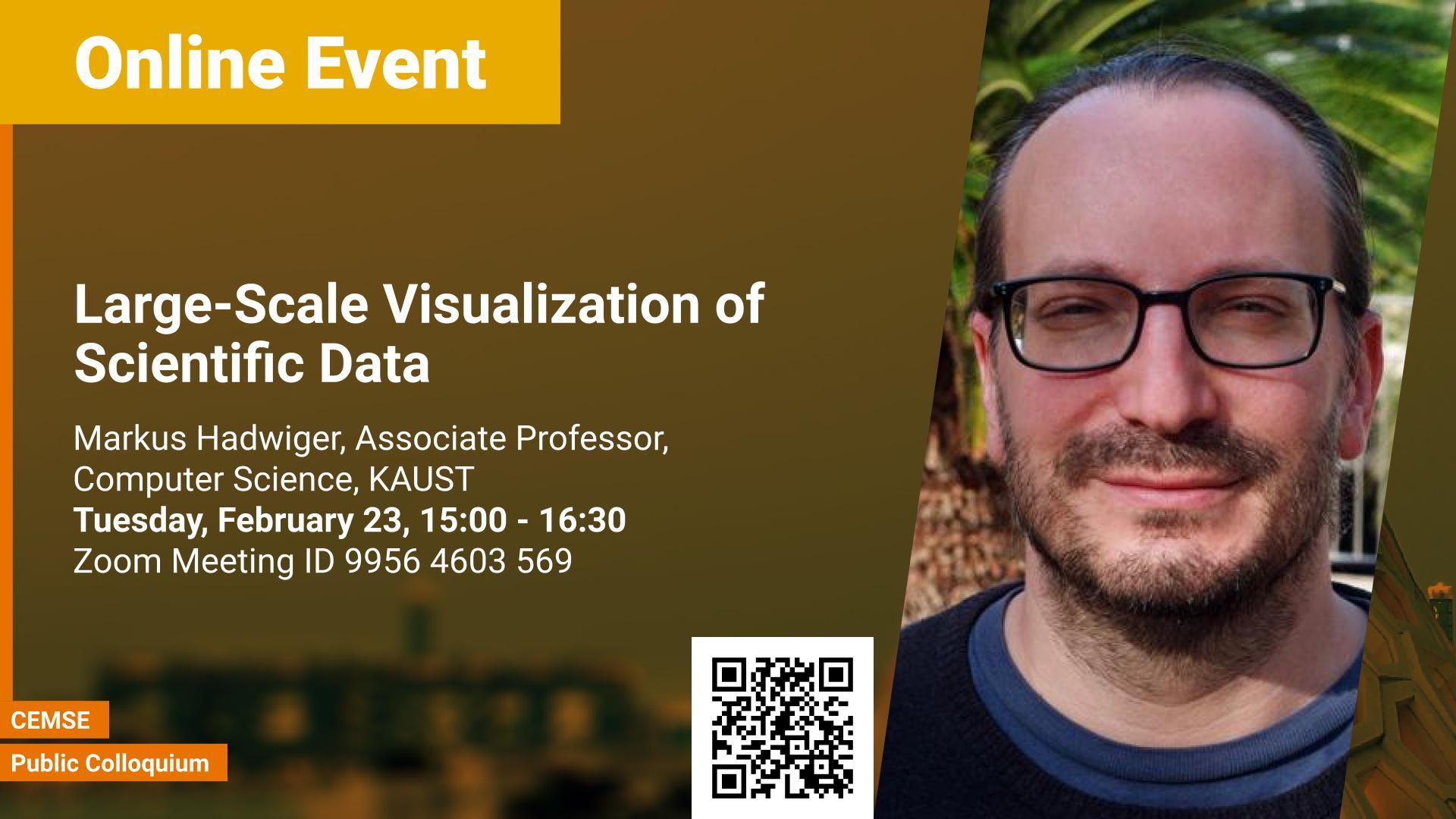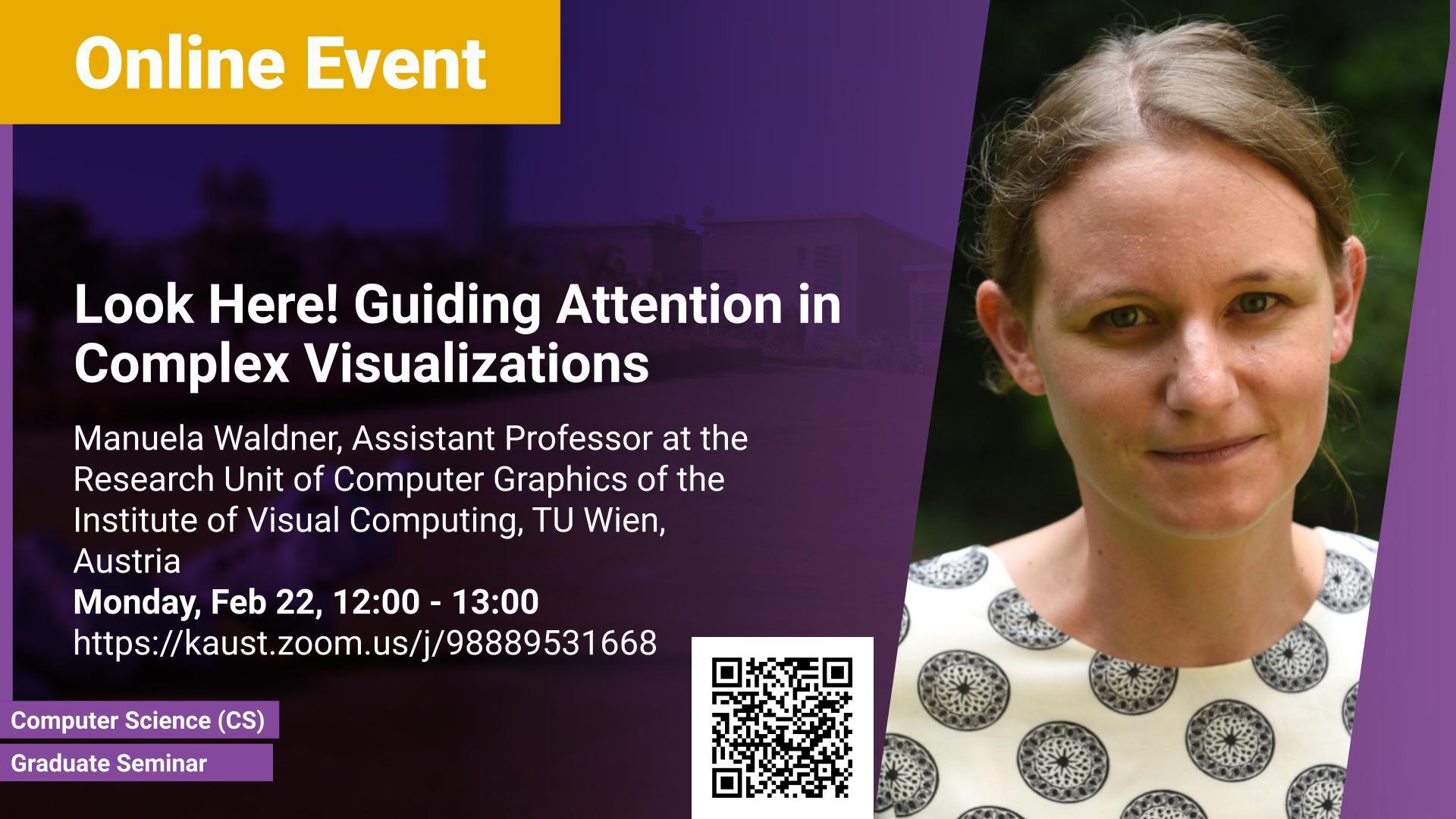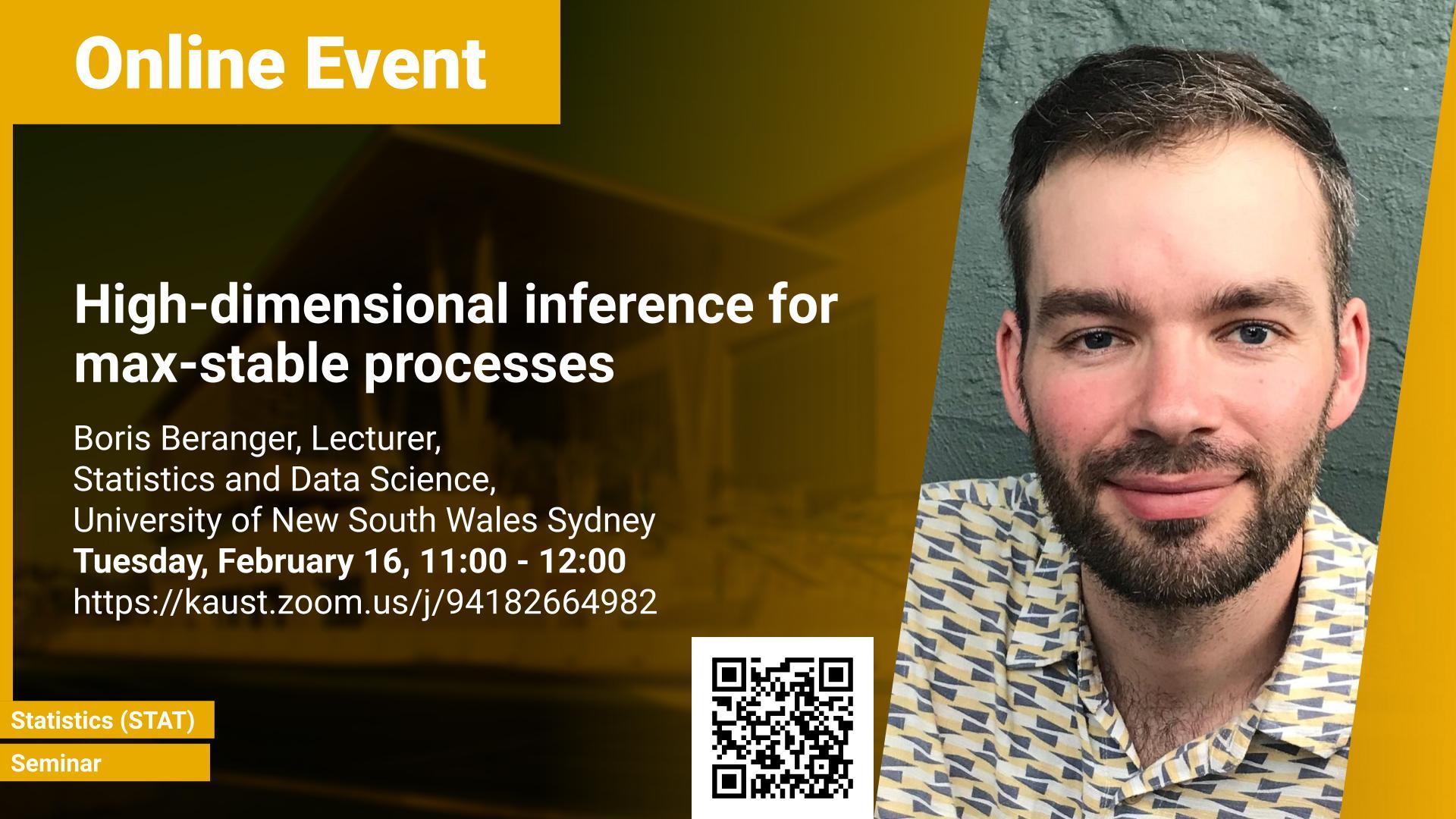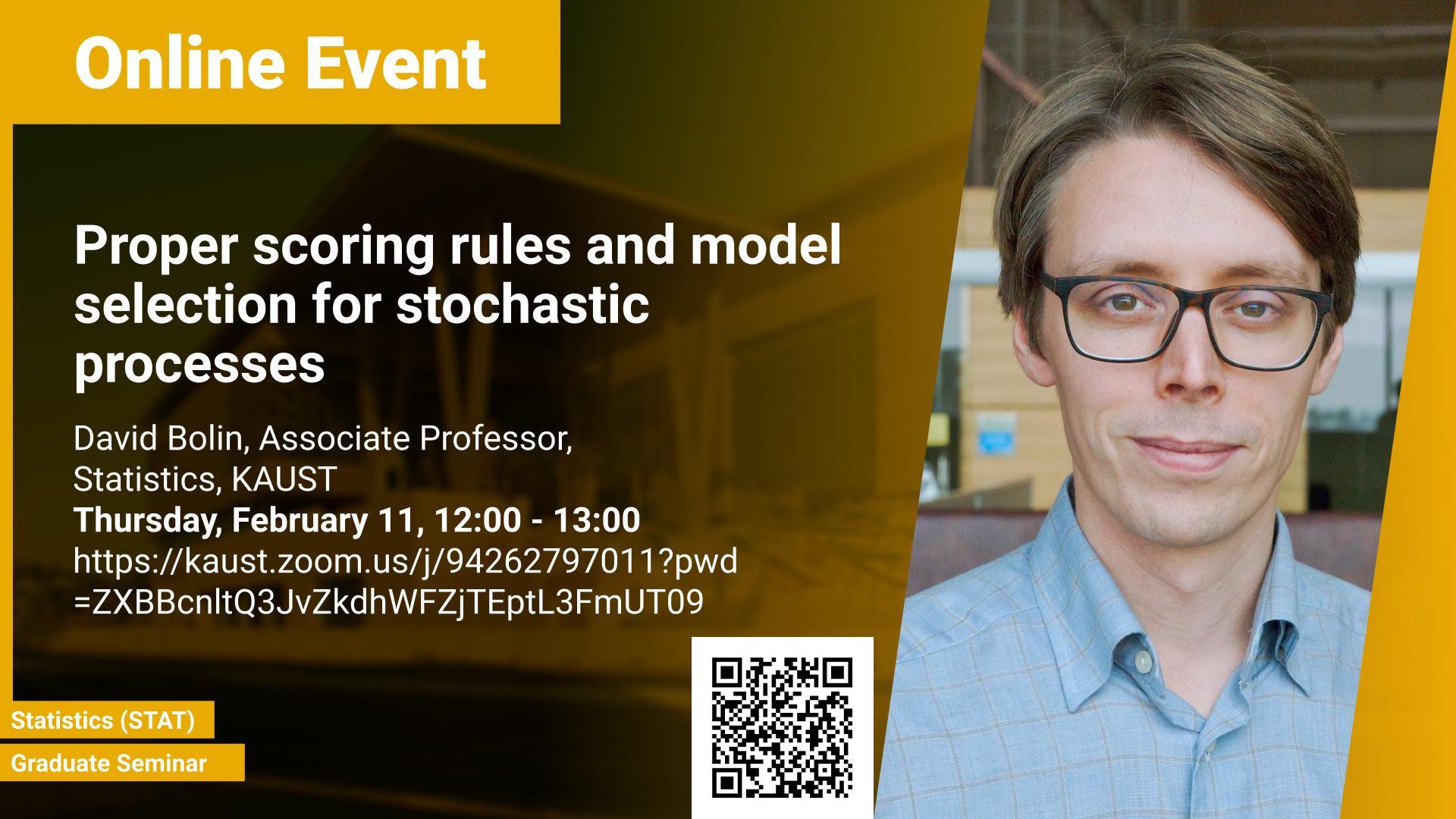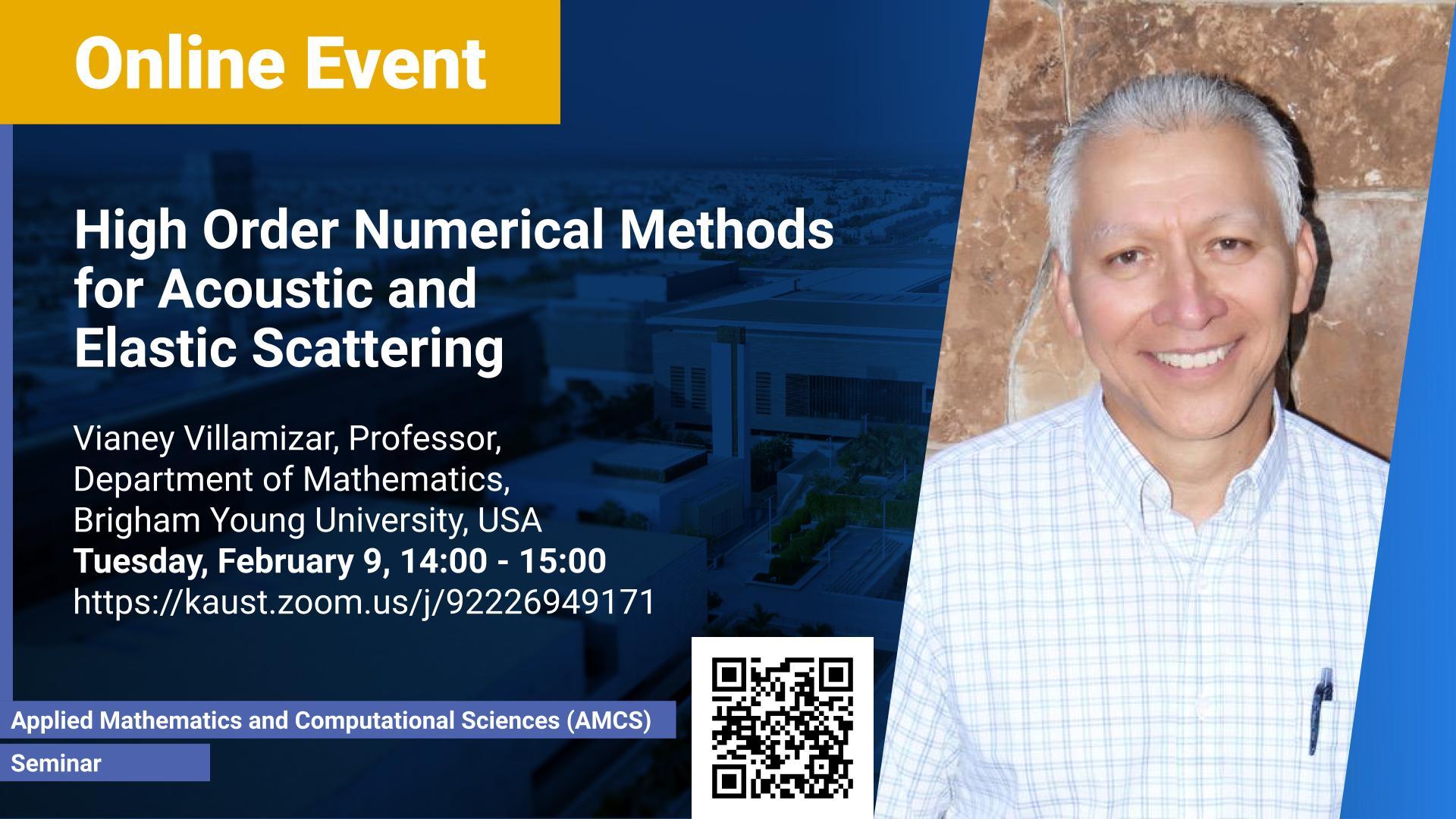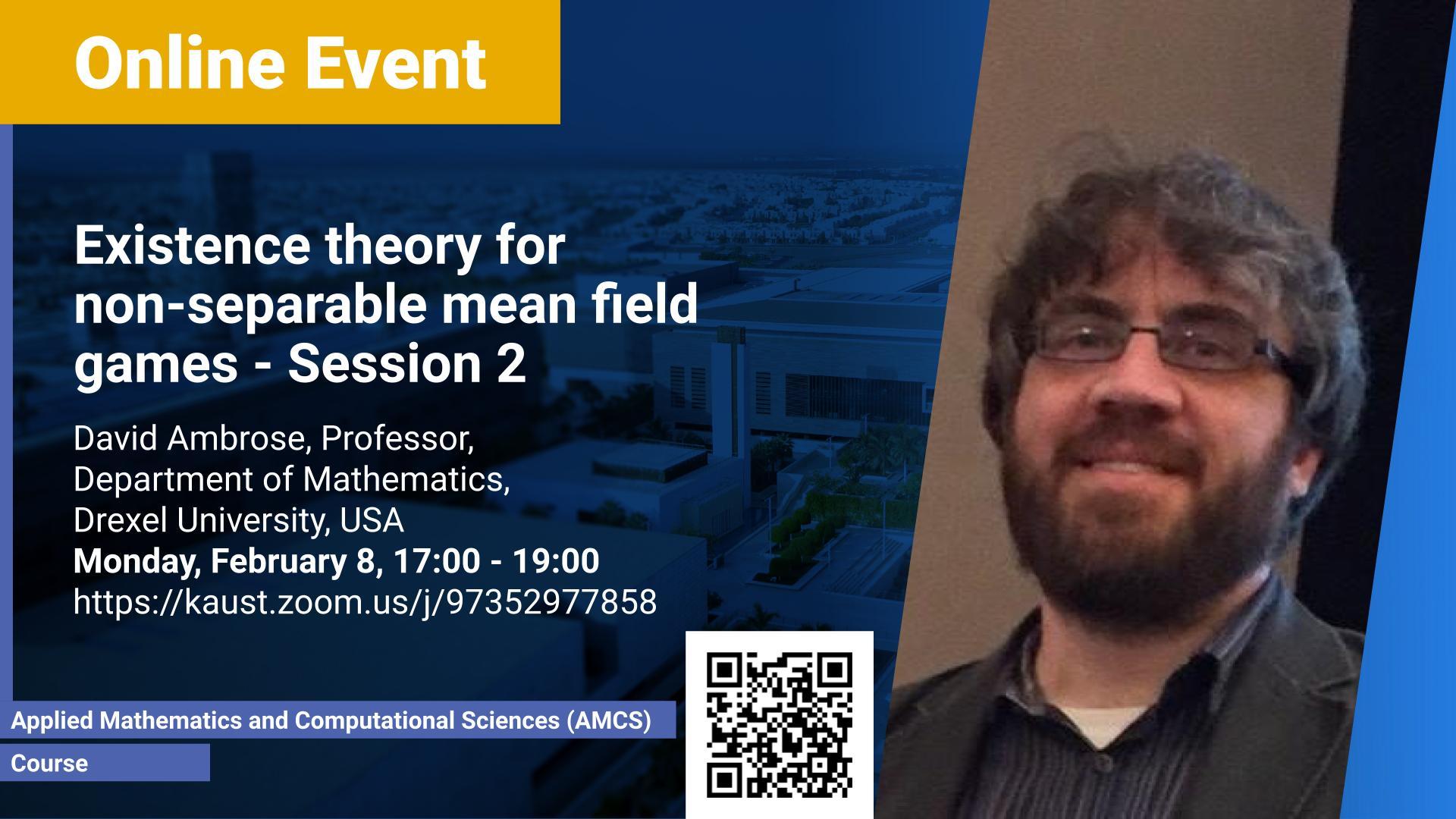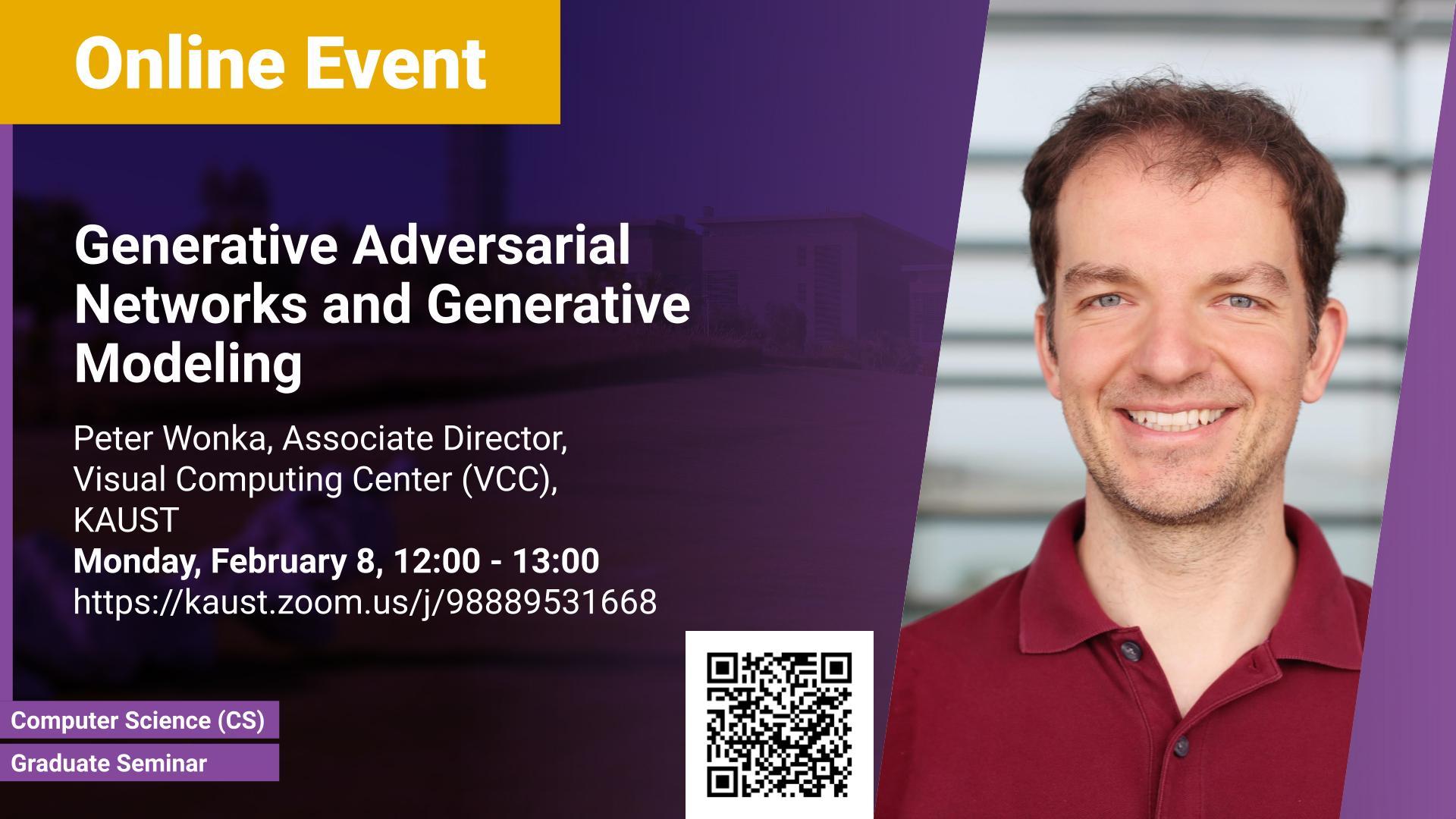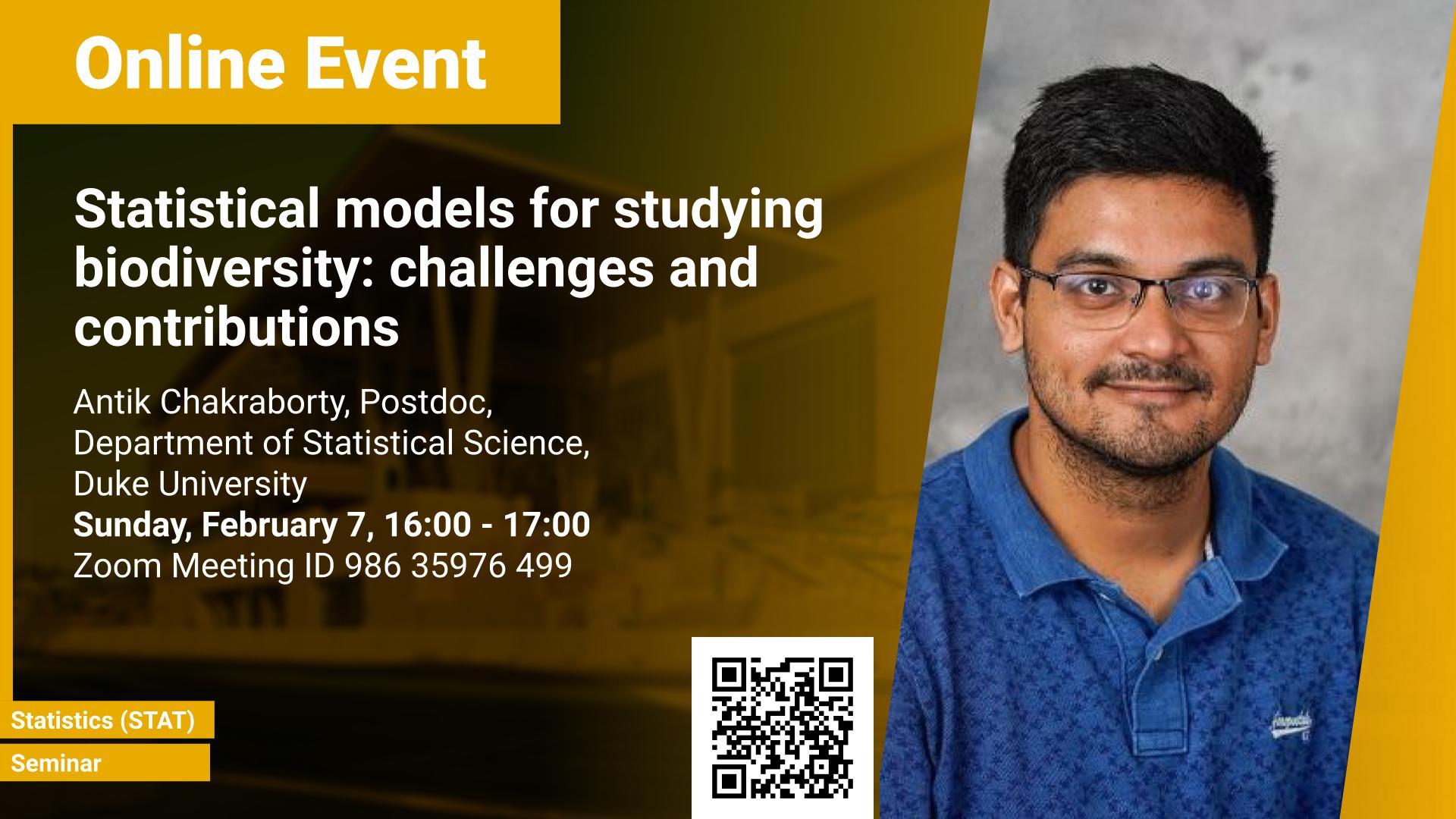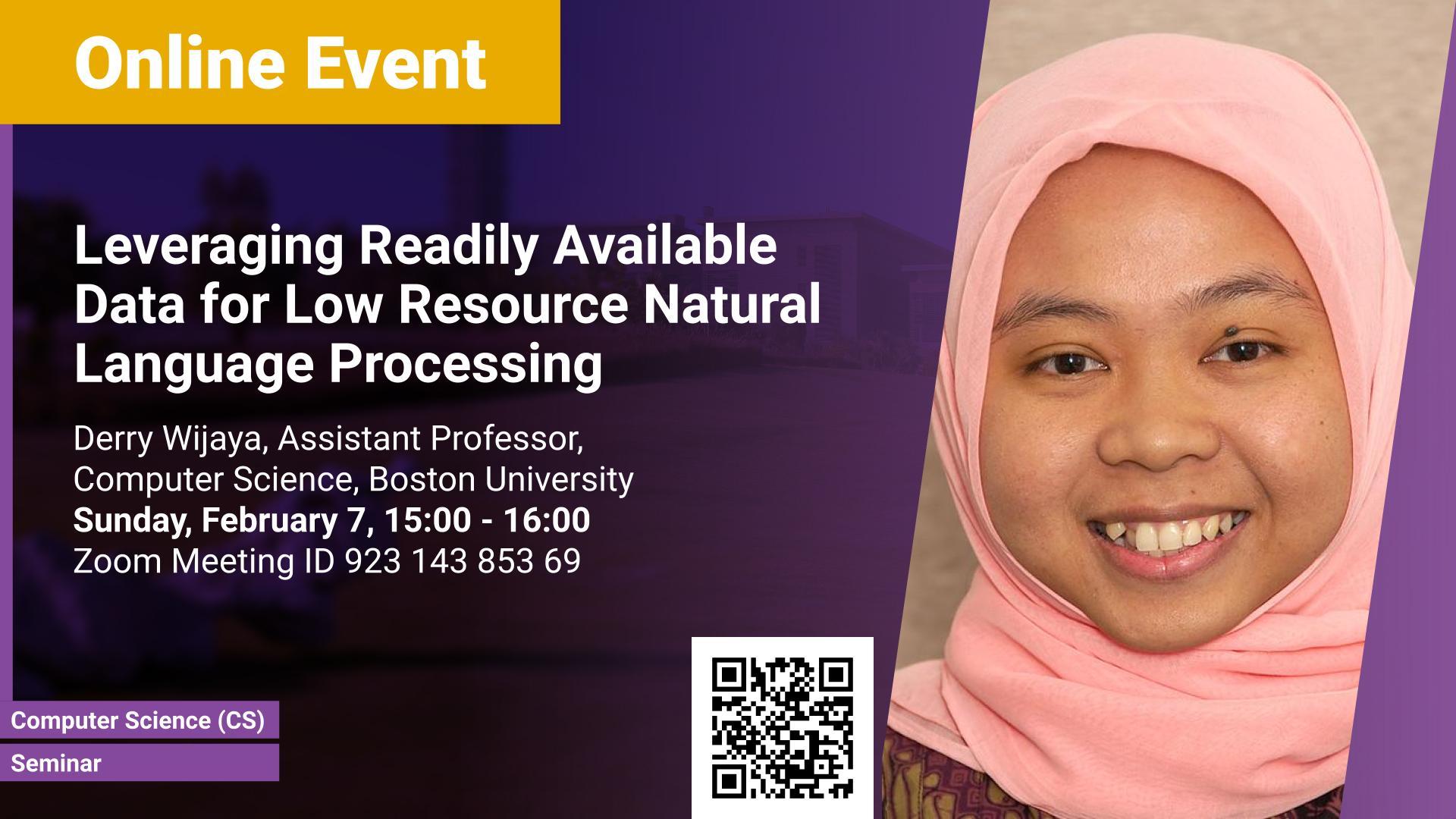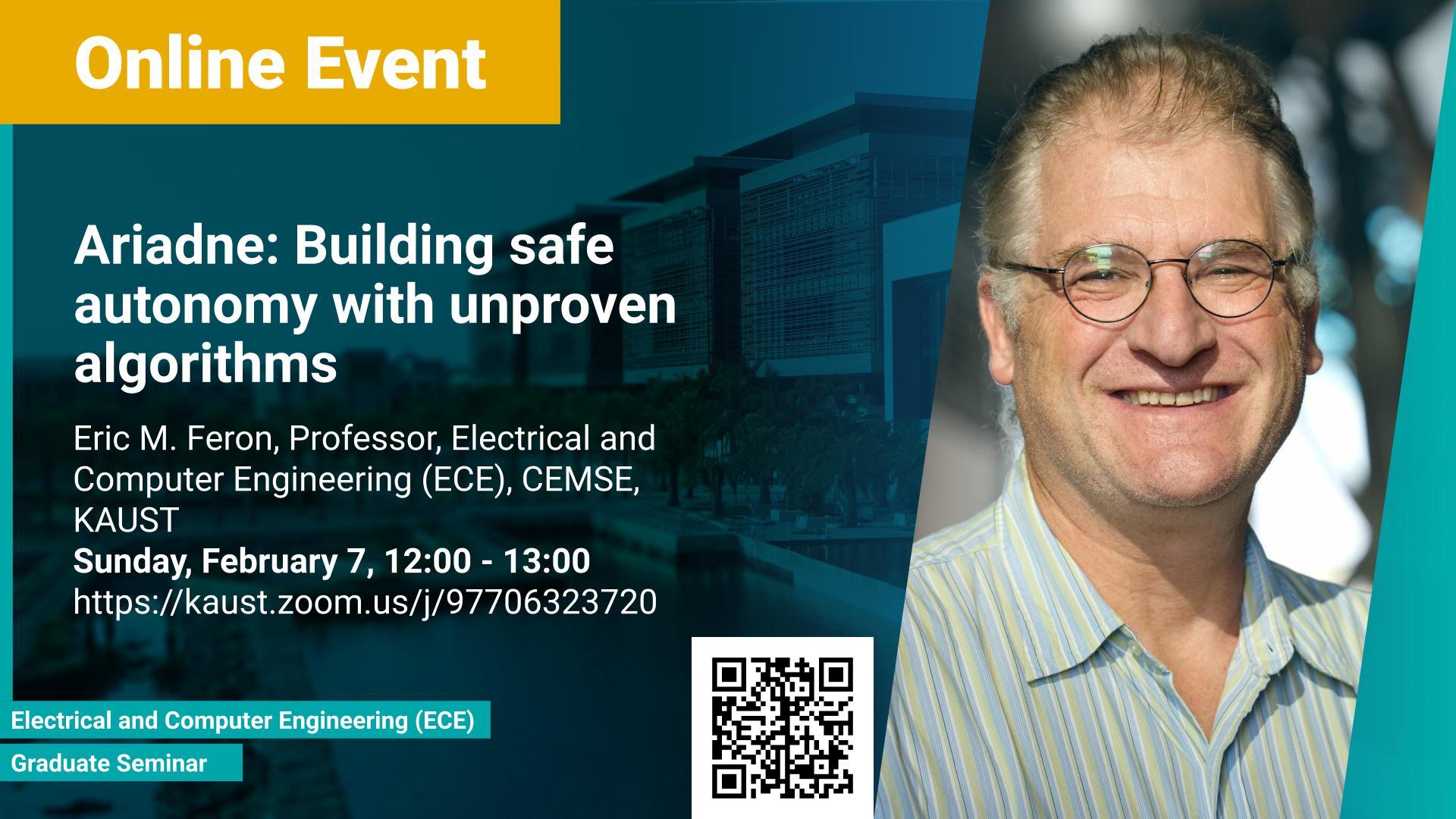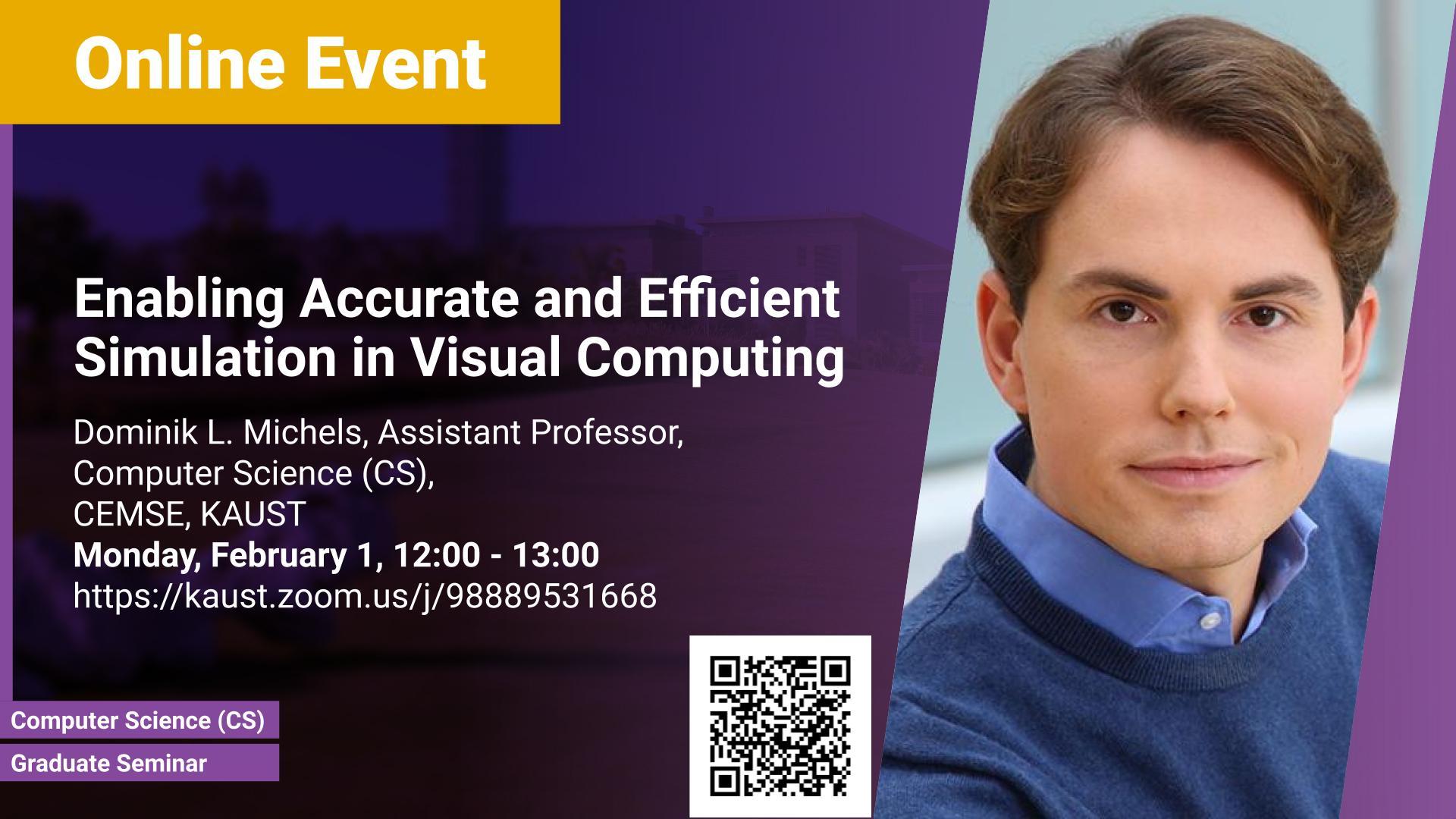Monday, March 01, 2021, 09:00
- 16:00
https://www.siam.org/conferences/cm/conference/cse21
Contact Person
Abstract
Big data modeling/inference and large-scale simulations have followed largely independent
Xiaohang Li, Assistant Professor, Electrical and Computer Engineering
Sunday, February 28, 2021, 12:00
- 13:00
KAUST
Contact Person
Wide bandgap (WBG) compound semiconductors including GaN have shown enormous success in solid-state lighting, display, and electrification in recent decades due to superior properties such as direct bandgap, high electron mobility, and large breakdown field. They have been changing the world by elevating living standards and addressing grand challenges such as global warming. The pioneering researchers have been recognized by numerous accolades including the Nobel Prize and most recently, the Queen Elizabeth Prize. Lately, the III-nitride and III-oxide ultrawide bandgap (UWBG) compound semiconductors with bandgap larger than 3.4 eV have attracted increasing attentions: they have been regarded as the 4th wave/generation after the consequential Si, III-V, and WBG semiconductors. Because the UWBG along with other properties could enable electronics and photonics to operate with significantly greater power and frequency capability and at much shorter far−deep UV wavelengths, respectively, both crucial for human society. Besides, they could be employed for the revolutionary quantum information science as the host and photonic platform. However, extensive multi-disciplinary studies of growth, materials, physics, and devices are essential to unearth the potentials due to the infancy. This seminar would cover the latest research on those aspects. It includes growth of state-of-the-art materials, discovery of unique material properties, and development of a widely adopted device physics framework for photonics and electronics especially short and long wavelength photonic devices.
Thursday, February 25, 2021, 12:00
- 13:00
KAUST
Contact Person
Abstract
The outstanding performance of deep neural networks (DNNs), for visual recognition tasks
Aram Karakhanyan, Professor, School of Mathematics, University of Edinburgh, UK
Tuesday, February 23, 2021, 15:00
- 18:00
KAUST
Contact Person
In this course I will discuss the basics of the classical theory of free boundary problems. We will focus on two problems; the Alt-Caffarelli and obstacle problem. In the first part of the course we will discuss the regularity of the solutions, and in the remainder the full and partial regularity of the free boundary.
Professor,
Computer Science
Tuesday, February 23, 2021, 15:00
- 16:30
KAUST
Contact Person
"A picture is worth a thousand words", and by going beyond static images, interactive visualization has become crucial to exploring, analyzing, and understanding large-scale scientific data. This is true for many areas of science and engineering, such as high-resolution imaging in neuroscience or materials science, as well as in large-scale fluid simulations of the Earth’s atmosphere and oceans, or of trillion-cell oil reservoirs. However, the fact that the amount of data in data-driven sciences is increasing rapidly toward the petascale, and further, presents a tremendous challenge to interactive visualization and analysis. Nowadays, an important enabler of interactivity is often the parallel processing power of GPUs, which, however, requires well-designed customized data structures and algorithms. Furthermore, scientific data sets do not only get larger, they also get more and more complex, and thus have become very hard to interpret and analyze. In this talk, I will give an overview of the research of my group in large-scale scientific visualization, from data structures and algorithms that enable petascale visualization on GPUs, to novel visual abstractions for interactive analysis of highly complex structures in neuroscience, to novel mathematical techniques that leverage differential geometric methods for the detection and visualization of features in large, complex fluid dynamics data on curved surfaces such as the Earth.
Manuela Waldner, Assistant Professor at the Research Unit of Computer Graphics of the Institute of Visual Computing and Human-Centered Technology at TU Wien, Austria
Monday, February 22, 2021, 12:00
- 13:00
KAUST
Contact Person
Drawing the user's attention to important items in an image, a complex visualization, or a cluttered graphical user interface is a non-trivial challenge. In the context of visualization, our goal is to effectively attract the user's attention to relevant items in large and complex scenes, while keeping noticeable modifications of the image to a minimum. In this talk, I will give an overview of common highlighting methods and present results from my research on attention guidance in complex, dynamic visualizations.
PhD Student,
Electrical and Computer Engineering
Sunday, February 21, 2021, 17:00
- 18:00
KAUST
Contact Person
In this thesis, we focus on precisely analyzing the high dimensional error performance of such regularized convex optimization problems under the presence of different impairments (such as uncertainties and/or correlations) in the measurement matrix, which has independent Gaussian entries. The precise nature of our analysis allows performance comparison between different types of these estimators and enables us to optimally tune the involved hyperparameters. In particular, we study the performance of some of the most popular cases in linear inverse problems, such as the Least Squares (LS), Regularized Least Squares (RLS), LASSO, Elastic Net, and their box-constrained variants.
Dr. Yi Wang, Postdoctoral Researcher, Power Systems Laboratory, ETH Zurich
Sunday, February 21, 2021, 12:00
- 13:00
KAUST
Contact Person
The widespread popularity of smart meters enables an immense amount of fine-grained smart meter data to be collected. Meanwhile, the deregulation of the power industry, particularly on the delivery side, has continuously been moving forward worldwide. Electricity retailer is one of the main participants in the retail market. This presentation will discuss how an electricity retailer can increase the competitiveness in the retail market by making full use of the fine-grained smart meter data. Since load forecasting is fundamental for various businesses of the retailer, the first part of this presentation will study how to enhance the performance of aggregated load forecasting using the fine-grained smart meter data. Designing customizing prices is an effective way to promote consumer interactions and increase customer stickiness for retailers. The second part of this presentation will introduce a novel data-driven approach for incentive-compatible customizing time-of-use (ToU) price design so that the benefits of both the retailer and consumers can be gained.
Prof. Xiangliang Zhang
Thursday, February 18, 2021, 12:00
- 13:00
KAUST
Contact Person
Machine learning has been widely applied to diverse problems of forwarding prediction and backward design. The former problem of forwarding prediction is to predict the reaction of a system given the input x, i.e., y=f(x). This talk will introduce several groups of algorithms for learning the prediction function f. The backward design is an inverse problem, predicting the input x according to the system reaction y, i.e., x=g(y). This is an important problem for the design of chemical material and optical devices. This talk will introduce several successful application examples of machine learning algorithms on the backward design problems.

Ivan Viola, Associate Professor, Computer Science
Wednesday, February 17, 2021, 11:30
- 13:00
KAUST
Contact Person
Life at micron-scale is inaccessible to the naked eye. To aid the comprehension of nano- and micro-scale structural complexity, we utilize 3D visualization. Thanks to efficient GPU-accelerated algorithms, we witness a dramatic boost in the sheer size of structures that can be visually explored. As of today an atomistic model of the entire bacterial cell can be displayed interactively. On top of that, advanced 3D visualizations efficiently convey the multi-scale hierarchical architecture and cope with the high degree of structural occlusion which comes with dense packing of biological building blocks. To further scale up the size of life forms that can be visually explored, the rendering pipeline needs to integrate runtime construction of the biological structure. Assembly rules define how a body of a certain biological entity is composed. Such rules need to be applied on-the-fly, depending on where the viewer is currently located in the 3D scene to generate full structural detail for that part of the scene. We will review how to construct membrane-like structures, soluble protein distributions, and fiber strands through parallel algorithms, resulting in a collision-free biologically-valid scene. Assembly rules that define how a life form is structurally built need to be expressed in an intuitive way for the domain scientist, possibly directly in the three-dimensional space. Instead of placing one biological element next to another one for the entire biological structure by the modelers themselves, only assembly rules need to be specified and the algorithm will complete the application of those rules to form the entire biological entity. These rules are derived from current scientific knowledge and from all available experimental observations. The Cryo-EM Tomography is on rising and shows that we can already now reach the near-atomistic detail when employing smart algorithms. Our assembly rules extraction, therefore, needs to integrate with microscopic observations, to create an atomistic representation of specific, observed life forms, instead of generic models thereof. Such models then can be used in whole-cell simulations, and in the context of automated science dissemination.
Ahmed Kebaier, Associate Professor, Laboratory Analysis, Geometry and Application (LAGA), University Sorbonne Paris Nord (USPN)
Tuesday, February 16, 2021, 12:00
- 13:00
KAUST
Contact Person
In this talk, we present our theoretical results recently developed around various types of applications. These results cover asymptotic and non-asymptotic analysis, functional limit theorems, concentration inequalities, and Malliavin calculus techniques elaborated for several classes of stochastic processes. We showcase through concrete examples the role of these results in taking up various challenges at the cutting-edge of modern applied probability.
Dr. Boris Beranger, Lecturer in Statistics, University of New South Wales, Sydney
Tuesday, February 16, 2021, 11:00
- 12:00
KAUST
Contact Person
Droughts, high temperatures and strong winds are key causes of the recent bushfires that have touched a major part of the Australian territory. Such extreme events seem to appear with increasing frequency, creating an urgent need to better understand the behavior of extreme environmental phenomena.
David Ambrose, Professor, Department of Mathematics at Drexel University, USA
Monday, February 15, 2021, 17:00
- 19:00
KAUST
Contact Person
The time-dependent PDE system for mean field games is a coupled pair of parabolic equations, one forward in time and the other backward in time. The lecturer will demonstrate two techniques for proving existence and uniqueness of solutions for this system. The first of these techniques is inspired by work in fluid dynamics, as a similar forward-backward structure for vortex sheets was discovered by Duchon and Robert in the 1980s. Adapting the ideas of Duchon and Robert gives existence and uniqueness of solutions for the time-dependent mean field games system in function spaces based on the Wiener algebra. The second technique to be demonstrated by the speaker uses Sobolev spaces, and is an adaptation of the energy method to the forward-backward setting.
Professor,
Computer Science
Monday, February 15, 2021, 12:00
- 13:00
KAUST
Contact Person
In a nutshell, Resilient Computing is a new paradigm based on modelling, architecting and designing computer systems so that: they have built-in baseline defences; such defences cope with virtually any quality of threat, be it accidental faults, design errors, cyber-attacks, or unexpected operating conditions; provide incremental protection of, and automatically adapt to, a dynamic range of threat severity; provide sustainable operation.
Dr. Paul Anthony Haigh, Newcastle University, United Kingdom and Dr. Bo Tan, Tampere University, Finland
Friday, February 12, 2021, 16:00
- 17:15
KAUST
Contact Person
In this webinar we will give an overview of several key technologies related to our special issues in Frontiers of Communications and Networks; (1) visible light communications (VLC) and (2) applications of machine learning in optical and wireless communication systems.
Associate Professor,
Statistics
Thursday, February 11, 2021, 12:00
- 13:00
KAUST
Contact Person
In this talk, we begin by a brief introduction to proper scoring rules and their use in statistics. Then, we discuss an often overlooked problem: the up-weighting of observations with large uncertainty, which can lead to unintuitive rankings of models, by some of the most popular proper scoring rules, such as the continuously ranked probability score (CRPS), the MAE, and the MSE.
Prof. Vianey Villamizar, Department of Mathematics, Brigham Young University, USA
Tuesday, February 09, 2021, 14:00
- 15:00
KAUST
Contact Person
A focus of my current research is to develop numerical methods for the accurate simulation of sound and seismic waves. This waves usually occur in very large domains. For the computational purpose, the original unbounded wave problems need to be transformed into bounded ones. To accomplish this goal artificial boundaries are chosen to truncate the infinite domains. The challenge is to define absorbing boundary conditions (ABC) on these artificial boundaries such that the solutions of the new bounded problems approximate to a reasonable degree the solutions of the original unbounded problems in their common domains. In part, my efforts and those of my students and collaborators have been in deriving computational advantageous ABC and the formulation of a high order and high accurate numerical methods inside the truncated domain.
In this talk, I will describe in some details our work. Also, I will include numerical results which demonstrate the improved accuracy and simplicity of our formulation when compared with commonly used ABC.
David Ambrose, Professor, Department of Mathematics at Drexel University, USA
Monday, February 08, 2021, 17:00
- 19:00
KAUST
Contact Person
The time-dependent PDE system for mean field games is a coupled pair of parabolic equations, one forward in time and the other backward in time. The lecturer will demonstrate two techniques for proving existence and uniqueness of solutions for this system. The first of these techniques is inspired by work in fluid dynamics, as a similar forward-backward structure for vortex sheets was discovered by Duchon and Robert in the 1980s. Adapting the ideas of Duchon and Robert gives existence and uniqueness of solutions for the time-dependent mean field games system in function spaces based on the Wiener algebra. The second technique to be demonstrated by the speaker uses Sobolev spaces, and is an adaptation of the energy method to the forward-backward setting.
Professor,
Computer Science
Monday, February 08, 2021, 12:00
- 13:00
KAUST
Contact Person
I will review some background of generative adversarial modeling using GANs and discuss how our group has been using GANs for image editing.
Antik Chakraborty, Postdoc, Department of Statistical Science, Duke University
Sunday, February 07, 2021, 16:00
- 17:00
KAUST
Contact Person
A healthy ecosystem is essential to our well being and to ensure that we need a better understanding of the life or biodiversity around us. In the first part of this talk, I will introduce how modern technology is being used to collect data on biodiversity across space and time. These data come in complex forms such as DNA sequences, high-dimensional binary vectors, sound signals, etc. I will briefly touch upon the statistical challenges involved in making sense of these data.
In the second part, I will elaborate on a project motivated by studying temporal patterns in bird vocalizations. I will introduce a new class of semiparametric latent variable models for long memory discretized event data. The proposed class of FRActional Probit (FRAP) models are based on the thresholding of a latent process consisting of an additive expansion of a smooth Gaussian process with a fractional Brownian motion. I will describe a Bayesian approach to inference using Markov chain Monte Carlo. Results from applying the model on Amazon bird vocalization data will be presented which provide substantial evidence for self-similarity and non-Markovian/Poisson dynamics. A hierarchical extension of the proposed model to accommodate vocalizations of multiple birds at the same time will also be discussed.
Derry Wijaya, Assistant Professor, Computer Science, Boston University
Sunday, February 07, 2021, 15:00
- 16:00
KAUST
Contact Person
State-of-the-art Natural Language Processing (NLP) systems nowadays are dominated by machine learning and deep learning models. However, most of these models often only work well when there are abundant labeled data for training. Furthermore, as these models typically have a large number of parameters, they require large compute resources to train. For the majority of languages in the world and the researchers working on these languages, however, abundant labeled data are a privilege and so do compute resources. How can we train generalizable NLP models that are effective even when labeled data are scarce and compute resources are limited? In this talk, I will present some of our solutions that leverage unsupervised or few-shot learning and readily available multilingual resources or multimodal data to improve machine translation and nuanced text classification such as news framing under these low resource settings.
Professor,
Electrical and Computer Engineering
Sunday, February 07, 2021, 12:00
- 13:00
KAUST
Contact Person
With the advent of increasingly intelligent algorithms, robots are capable of planning and performing increasingly challenging and creative tasks. Safety, however, remains an essential requirement on robotic behaviors. It is also a property that is hard or impossible to prove for virtually all intelligent algorithms of practical value. Ariadne is a model-based paradigm that enables the safe operation of many robotic systems, even though the algorithms involved with the operation may not be verifiable. Ariadne, or "plan B" engineering, will be illustrated in various current Robotics contexts derived from Ariadne's own Greek mythology, railroad systems, nuclear energy production, air transportation, and others.
Nevena Tomic, Library Subject Specialist, PSE, KAUST
Thursday, February 04, 2021, 12:00
- 13:00
KAUST
Contact Person
This session will help you to improve the efficiency of your literature searches. You will learn basic search techniques – using Boolean operators, keyword search, concept search, truncation, etc. Two major interdisciplinary scientific databases – Web of Science and Scopus, as well as CEMSE specific resources in KAUST library collections will be presented.
David Ambrose, Professor, Department of Mathematics at Drexel University, USA
Monday, February 01, 2021, 17:00
- 19:00
KAUST
Contact Person
The time-dependent PDE system for mean field games is a coupled pair of parabolic equations, one forward in time and the other backward in time. The lecturer will demonstrate two techniques for proving existence and uniqueness of solutions for this system. The first of these techniques is inspired by work in fluid dynamics, as a similar forward-backward structure for vortex sheets was discovered by Duchon and Robert in the 1980s. Adapting the ideas of Duchon and Robert gives existence and uniqueness of solutions for the time-dependent mean field games system in function spaces based on the Wiener algebra. The second technique to be demonstrated by the speaker uses Sobolev spaces, and is an adaptation of the energy method to the forward-backward setting.
Associate Professor,
Computer Science
Monday, February 01, 2021, 12:00
- 13:00
KAUST
Contact Person
The overarching goal of Prof. Michels' Computational Sciences Group within KAUST's Visual Computing Center is enabling accurate and efficient simulations for applications in Scientific and Visual Computing.
